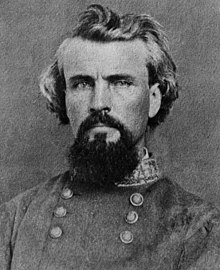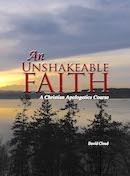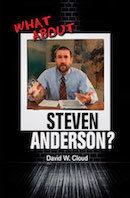866-295-4143, fbns@wayoflife.org

Nathan Bedford Forrest
“In April of 1867, representatives met in Nashville, at the Maxwell House, and turned out a flavor more to their liking. With much talk of unity of purpose, concert of action, proper limits, and authority to the prudent, a Constitution or prescript was drawn up. ... Nathan Bedford Forrest, lately of the armies of the Confederacy was elected Grand Wizard, and his Empire divided into realms, dominions, provinces, and dens, headed by Grand Dragons, titans, Giants, and Cyclopes, and composed of Ghouls” (David Chalmers, Hooded Americanism: The History of the Ku Klux Klan).
“Their goal would be to disrupt radical Reconstruction through intimidation of Republican voters and politicians, starting with the 1868 elections. The new Klan leaders formalized the hierarchy of the ‘Invisible Empire,’ as it would come to be known, with a ‘Grand Wizard.’ Forrest, at the top, commanding rank-and-file ‘ghouls’ initiated in secret grips, passwords, and rituals. [Forrest was a] slave trader before the Civil War, and a commander of forces notorious for massacring surrendered black Union soldiers during the conflict ... New Klansmen swore to support ‘a white man’s government,’ and to maintain absolute secrecy about Klan activities, upon pain of death” (Charles Lane, Freedom’s Detective: The Secret Service, the Ku Klux Klan and the Man Who Masterminded America’s First War on Terror, p. 23).
“Henceforth it was to be war between the Klan and Radical rule” (Chalmers, Hooded Americanism).
In 1868, Forrest was a delegate to the Democratic Convention in New York City. Horatio Seymour was nominated as the Democratic presidential candidate, and Frank Blair, Jr., a friend of Forrest, was nominated vice presidential candidate. Their campaign slogan was, “Our Ticket, Our Motto, This Is a White Man’s Country; Let White Men Rule.” The Democratic Party called for termination of the Freedman’s Bureau and “any government policy designed to aid blacks in the South” (Charles Calhoun, The Presidency of Ulysses S. Grant).
During the election campaign of 1868, there were 336 murders or attempted murders of blacks in Georgia alone to suppress Republican voting (Jonathan Bryant, “Ku Klux Klan in the Reconstruction Era,” georgiaencyclopedia.org).
The first KKK political assassination was that of George Ashburn, a leading white Republican in Georgia who assisted in writing Georgia’s new reconstructionist constitution. He was among the white minority in the South who opposed succession. Before the Civil War, he came to see slavery as evil and quit his job as a plantation overseer. He fought on the side of the Union and returned home to Georgia after the war with the following dream: “I only hope to live to see Georgia reconstructed and to lay my bones in soil consecrated to liberty, within her borders” (Lane, Freedom’s Detective, p. 17). Ashburn was appointed a judge by the military governor George Meade and called to order the Georgia Constitutional Convention of 1867 to remove restrictions on the civil rights of African Americans. Ashburn was shot to death on the evening of March 30, 1868, in his boarding room by four KKK shooters. All were Democrats. One was the chairman of the local Democratic Party; another was the Democratic clerk of the Muscogee County court. They were captured and brought to trial in a federal court. One of the defense lawyers was Alexander Stephen, former vice president of the Confederate States. In his “Cornerstone Speech” in favor of secession in March 1861, he said the Confederacy is “founded upon ... the great truth that the negro is not equal to the white man; that slavery, subordination to the superior race, is his natural and normal condition.” The federal government made a deal with the Georgia Democrats to stop the trial in exchange for Georgia’s ratification of the 14th Amendment. No one was ever punished for the assassination.
Forrest’s life reads like a novel. He had a Christian mother and he married a Christian woman named Mary Ann Montgomery (who was advised against it by her uncle, a pastor), but he was anything but a Christian himself. When his father died when he was 16, he became the man of the house. He loved and honored his mother in his own unconverted way. When she was attacked and injured by a cougar, he got his gun and his hunting dogs, tracked down the beast, treed it, killed it, and cut off its ears to present to his mother as a trophy of revenge. He made a fortune before the war of an estimated $1.5 million, a vast sum in those days, but he made it as a gambler, a slaver owner, a slave trader, and other wicked pursuits. He killed his first man at age 24 when his uncle was attacked by four brothers named Matlock who were seeking payment for a debt. He shot two of them with a gun and stabbed two with a knife, and only one survived.
With only one year of formal education, Forrest was the only man in the Civil War to rise from private to general, and this was because of his genius as a calvary commander. He was called the Wizard of the Saddle. He killed 31 men during the war in hand-to-hand combat, had 30 horses shot out from under him, and was wounded four times. In one engagement, he fought four men at once and managed to escape. His brilliant tactics enabled him to defeat the larger Union forces repeatedly. General William Tecumseh Sherman named him “that devil Forrest” and called for his death “even if it takes 10,000 men and bankrupts the Federal treasury.” His battlefield tactics have been studied in war colleges.
Forrest left the KKK in 1869 and tried unsuccessfully to disband it. Six years later, he was converted under the preaching of his wife’s pastor, George Stainback, of Court Avenue Presbyterian Church in Memphis, Tennessee. He had been attending church with his wife, and in the Fall of 1875, he came under conviction by Christ’s words of Matthew 7:24-27. He told the pastor, “Sir, your sermon has removed the last prop from under me. I am the fool that built on the sand; I am a poor miserable sinner.” Stainback told him to go home and read the account of David’s repentance in Psalm 51. The next evening, Forrest knelt with the pastor and put his trust in Jesus Christ as his Lord and Saviour. The prayers of his Christian mother and wife were finally answered. The violent KKK Grand Wizard was a changed man, and hate was replaced with love.
His final speech was delivered later that same year to the Pole-Bearers Association, an organization of blacks devoted to equal rights for all citizens. He called for the advancement of the black race and peace and harmony between black and white Americans. He said, “I came to meet you as friends, and welcome you to the white people. I want you to come nearer to us. When I can serve you I will do so. We have but one flag, one country; let us stand together. We may differ in color, but not in sentiment. ... Go to work, be industrious, live honestly and act truly, and when you are oppressed I'll come to your relief. I thank you, ladies and gentlemen, for this opportunity you have afforded me to be with you, and to assure you that I am with you in heart and in hand” (Shane Kastler, When the Devil Got Saved: The Christian Conversion of Nathan Bedford Forrest). When offered a bouquet of flowers by a young black girl named Lou Lewis as a sign of reconciliation between the races, he accepted them and kissed her on the cheek.
He died two years later of diabetes at age 56. On his deathbed he testified that there was “not a cloud that separated him from his beloved Heavenly Father.”
The gospel of Jesus Christ is the only thing that has the power to reconcile man with God and to change men’s hearts so that they are reconciled with their fellow man. Politics, philosophy, religion, none of it has this power, and God’s people need to keep their hands to the plow to preach the gospel and build life-changing New Testament churches instead of being sidetracked by worldly pursuits.
- Receive these reports by email
- www.wayoflife.org
______________________
Sharing Policy: Much of our material is available for free, such as the hundreds of articles at the Way of Life web site. Other items we sell to help fund our expensive literature and foreign church planting ministries. Way of Life's content falls into two categories: sharable and non-sharable. Things that we encourage you to share include the audio sermons, O Timothy magazine, FBIS articles, and the free eVideos and free eBooks. You are welcome to make copies of these at your own expense and share them with friends and family. You may also post parts of reports and/or entire reports to websites, blogs, etc as long as you give proper credit (citation). A link to the original report is very much appreciated as the reports are frequently updated and/or expanded. Things we do not want copied and distributed are "Store" items like the Fundamental Baptist Digital Library, print editions of our books, electronic editions of the books that we sell, the videos that we sell, etc. The items have taken years to produce at enormous expense in time and money, and we use the income from sales to help fund the ministry. We trust that your Christian honesty will preserve the integrity of this policy. "For the scripture saith, Thou shalt not muzzle the ox that treadeth out the corn. And, The labourer is worthy of his reward" (1 Timothy 5:18). Questions? support@wayoflife.org
Goal:Distributed by Way of Life Literature Inc., the Fundamental Baptist Information Service is an e-mail posting for Bible-believing Christians. Established in 1974, Way of Life Literature is a fundamental Baptist preaching and publishing ministry based in Bethel Baptist Church, London, Ontario, of which Wilbert Unger is the founding Pastor. Brother Cloud lives in South Asia where he has been a church planting missionary since 1979. Our primary goal with the FBIS is to provide material to assist preachers in the edification and protection of the churches.
Offering: Offerings are welcome if you care to make one. If you have been helped and/or blessed by our material offerings can be mailed or made online with with Visa, Mastercard, Discover, or Paypal. For information see: www.wayoflife.org/about/makeanoffering.html.





